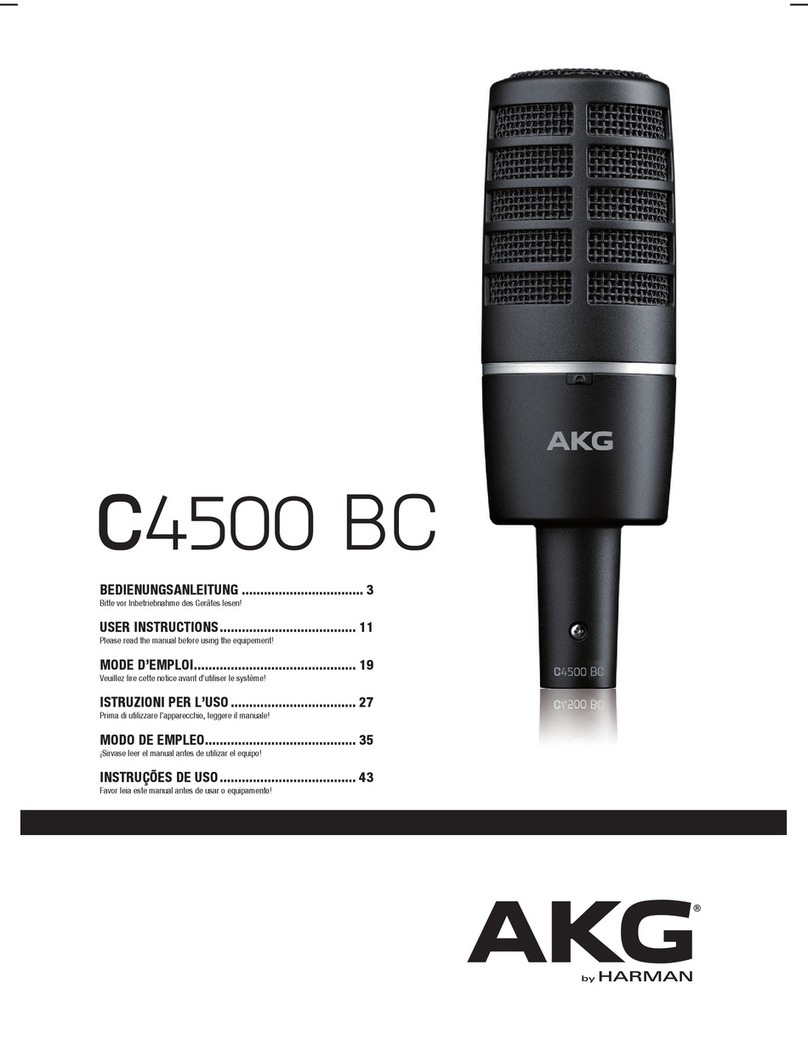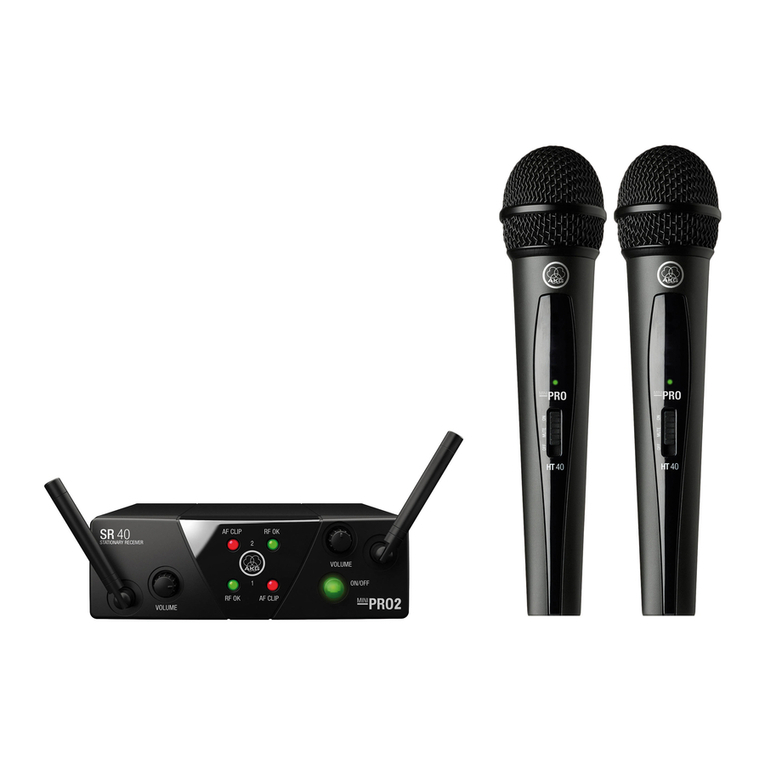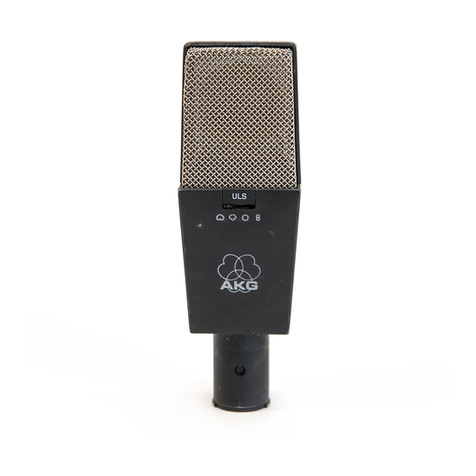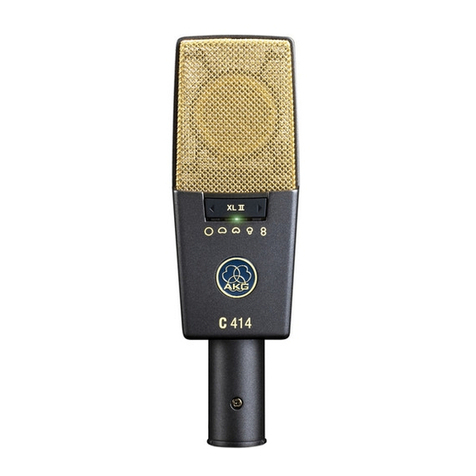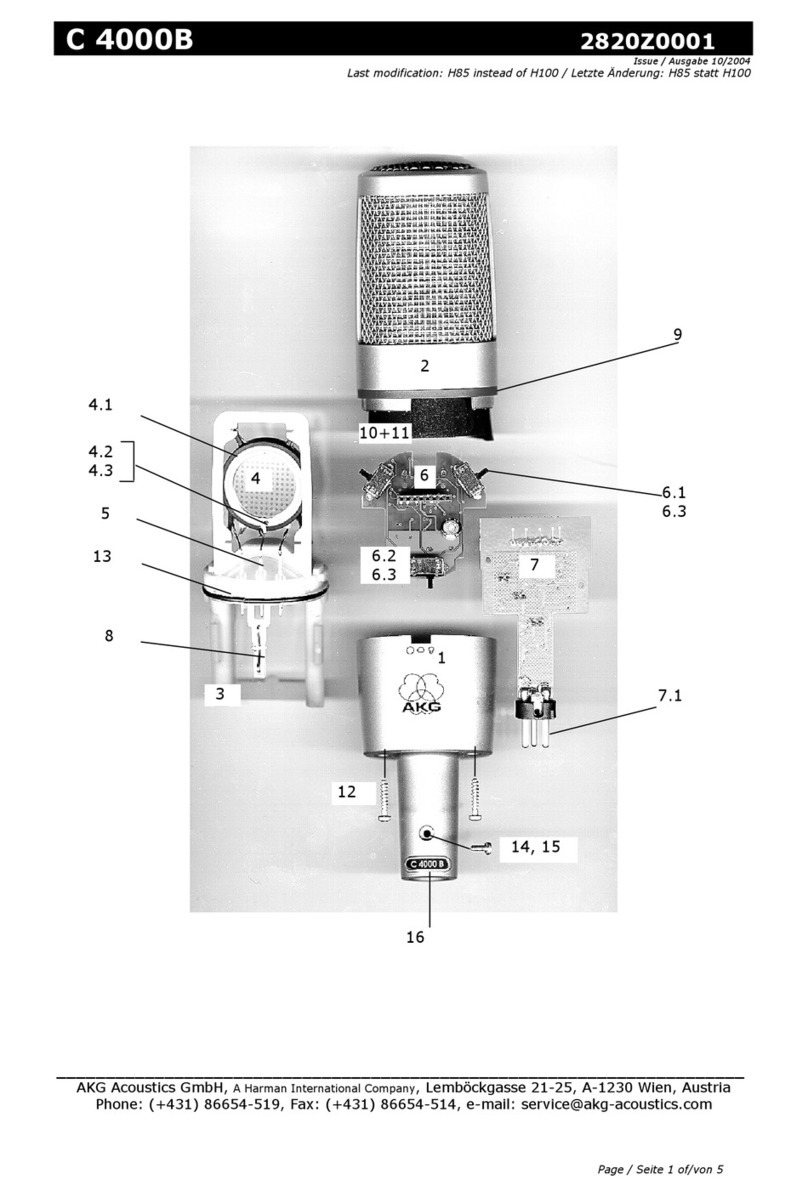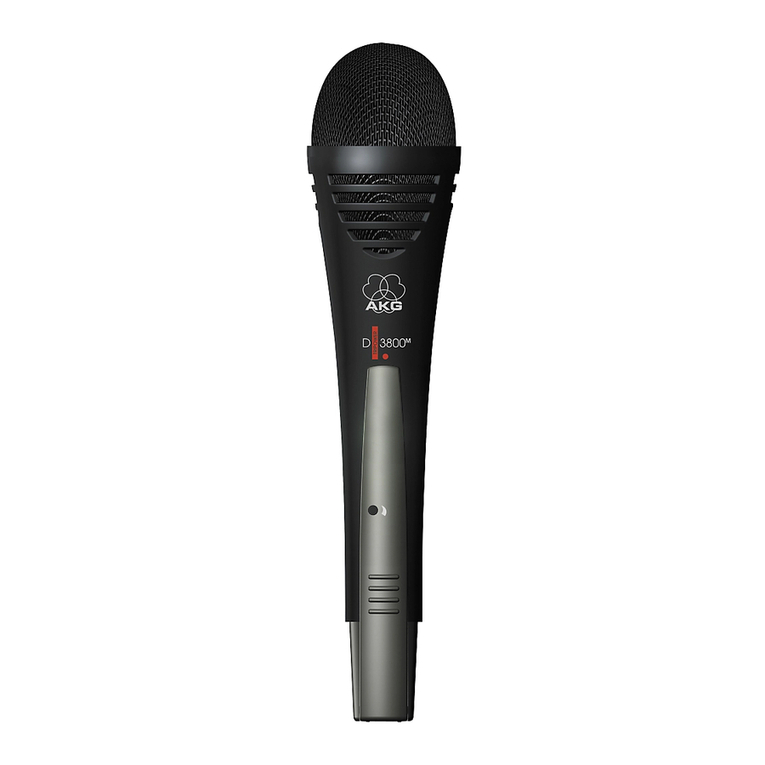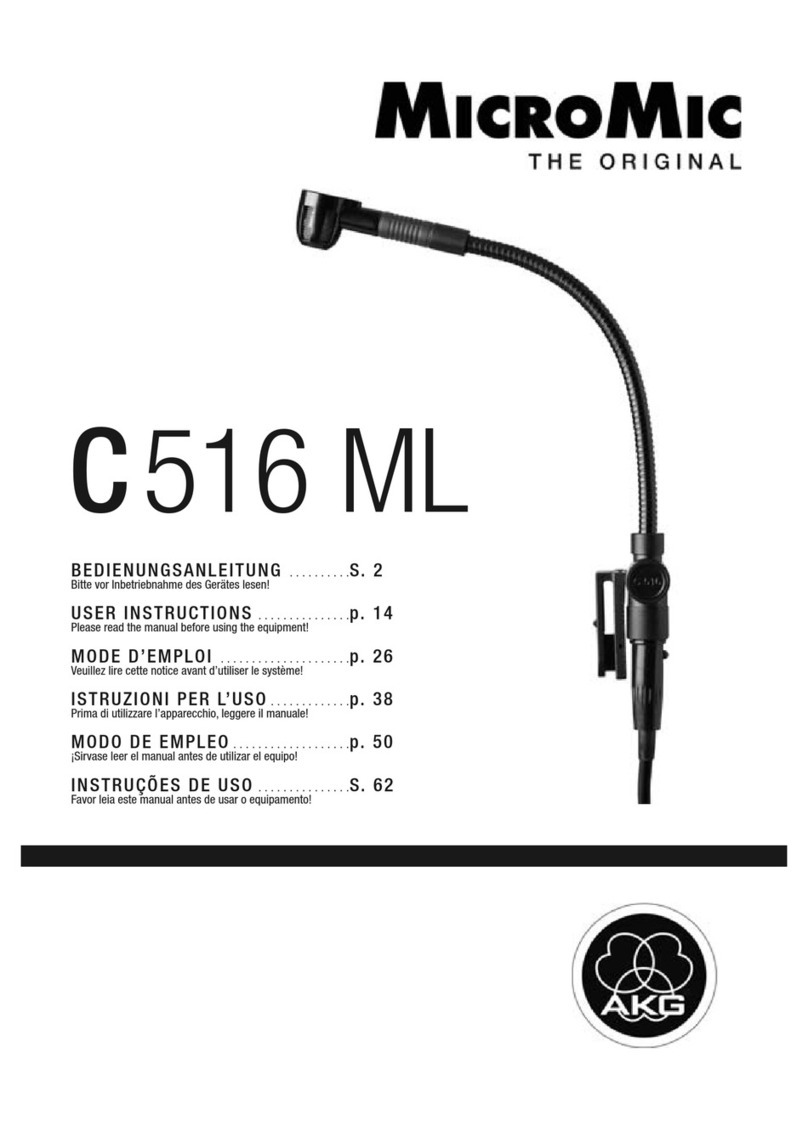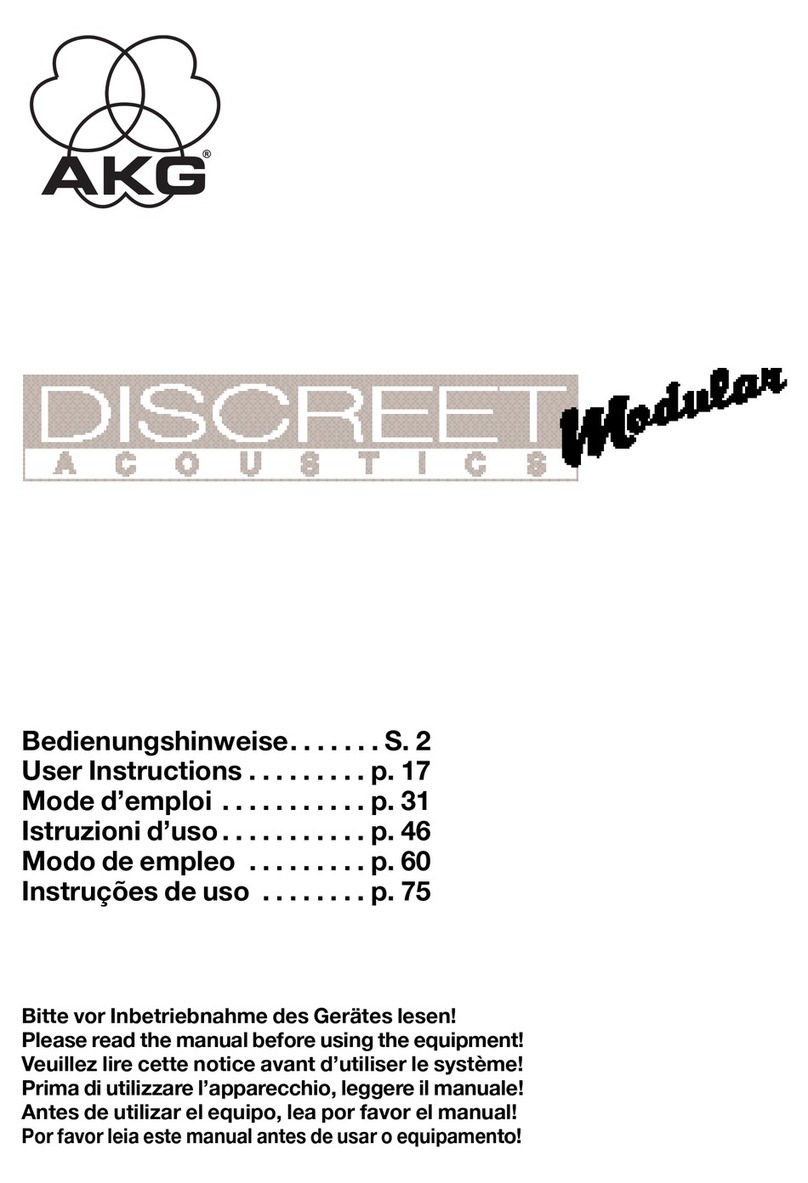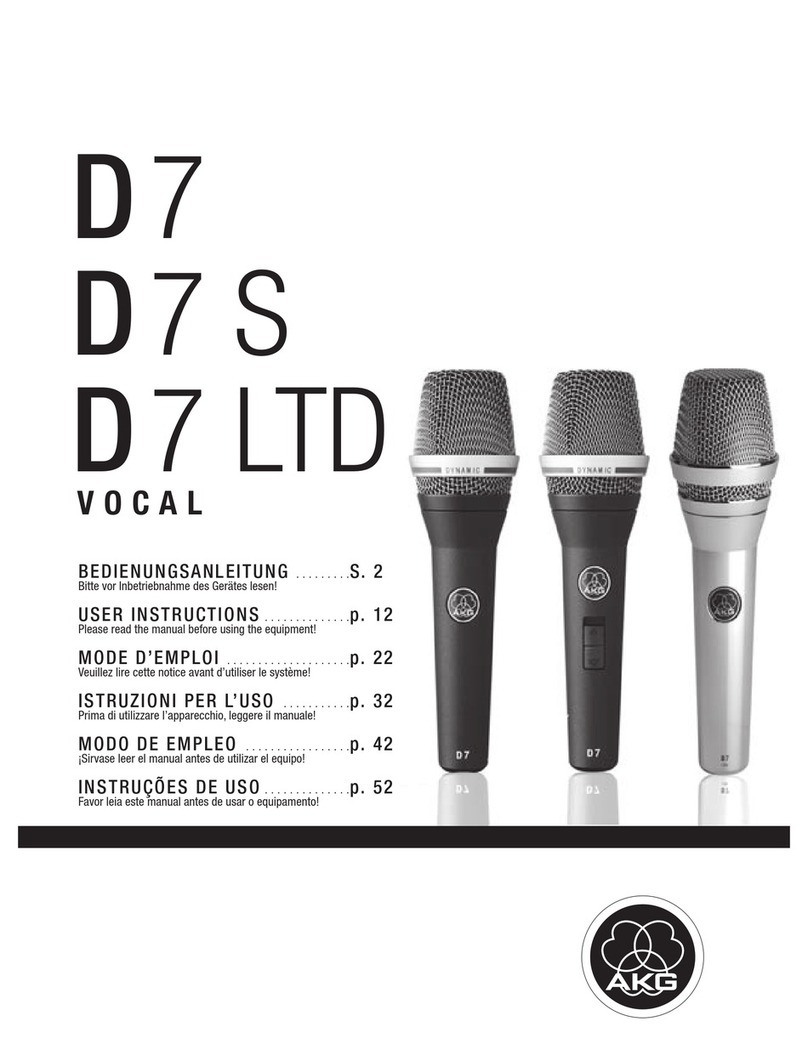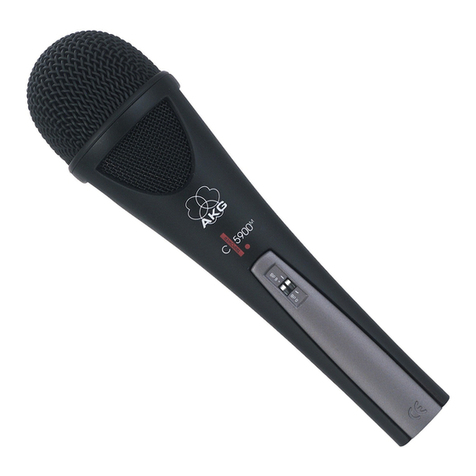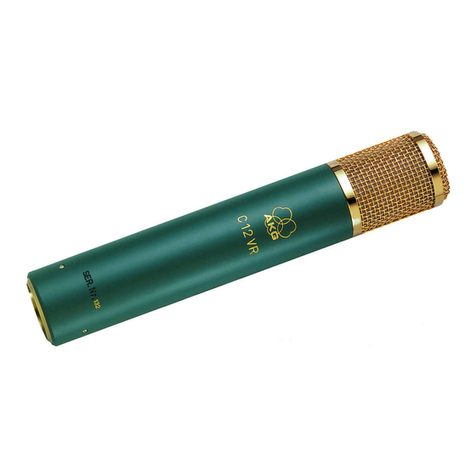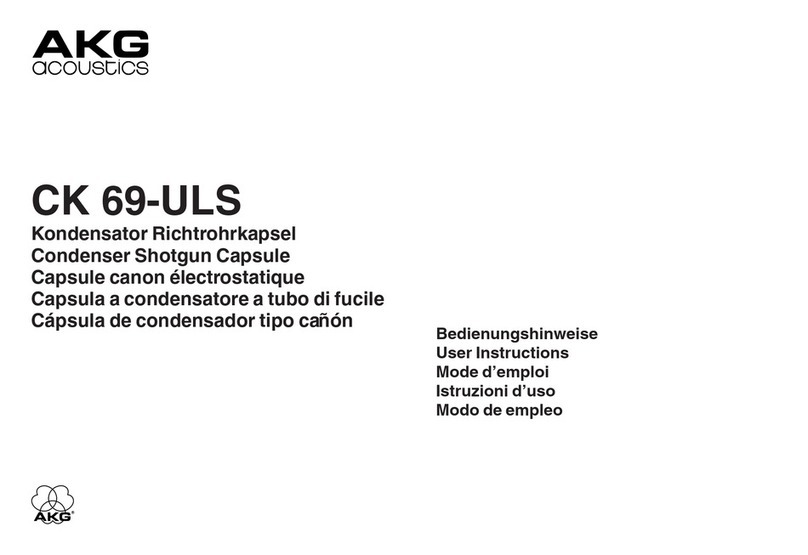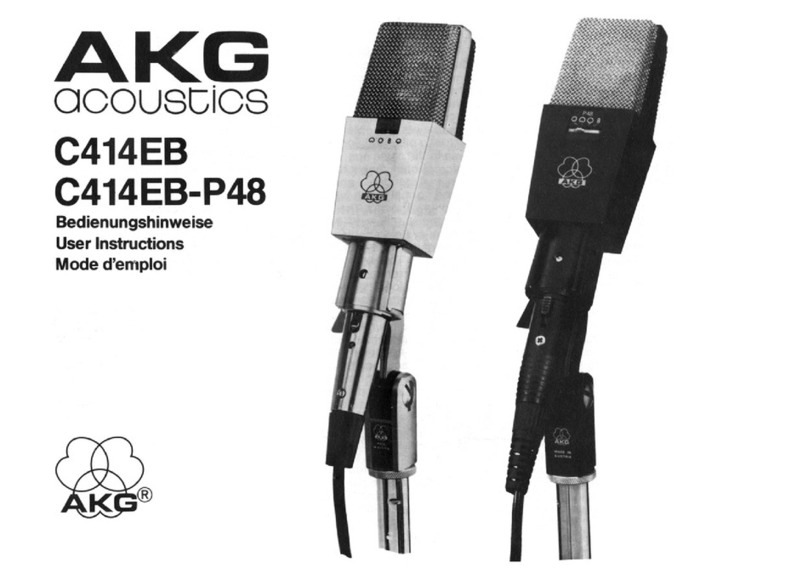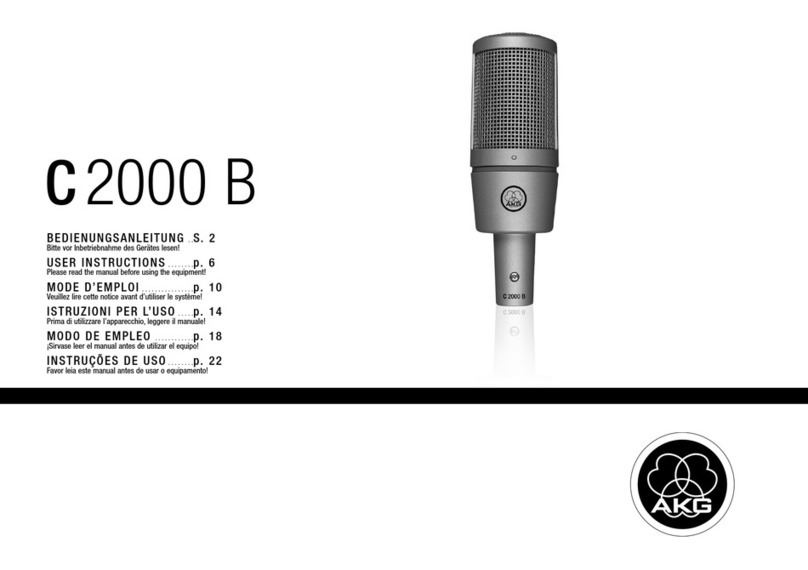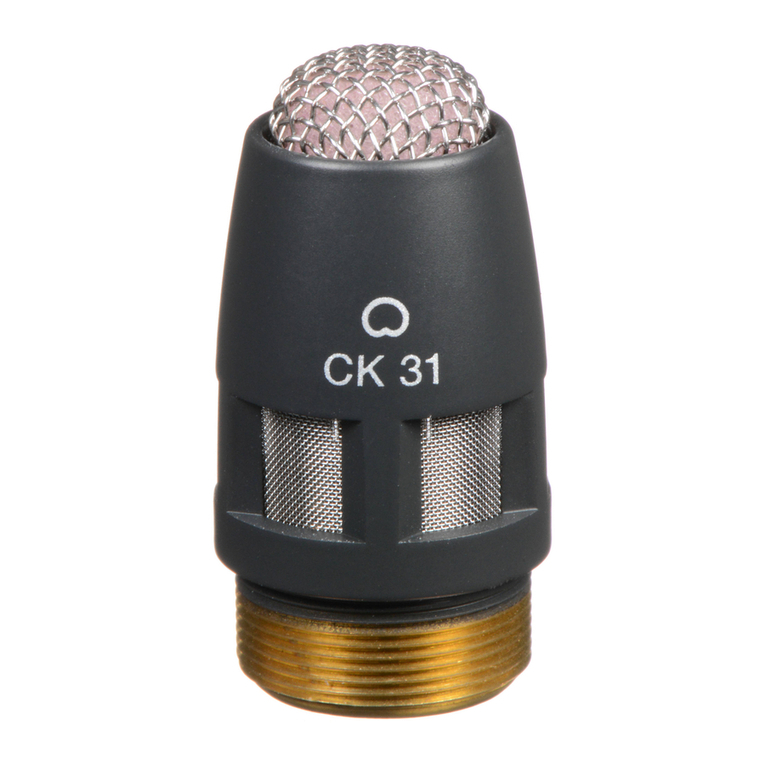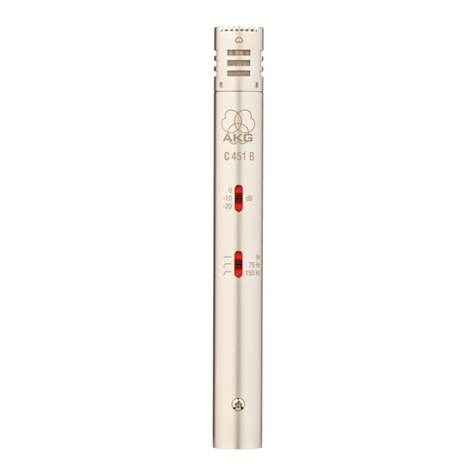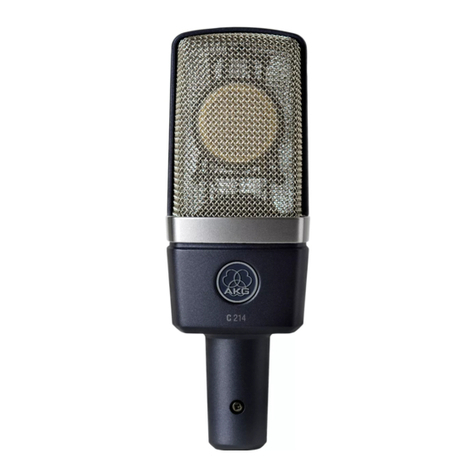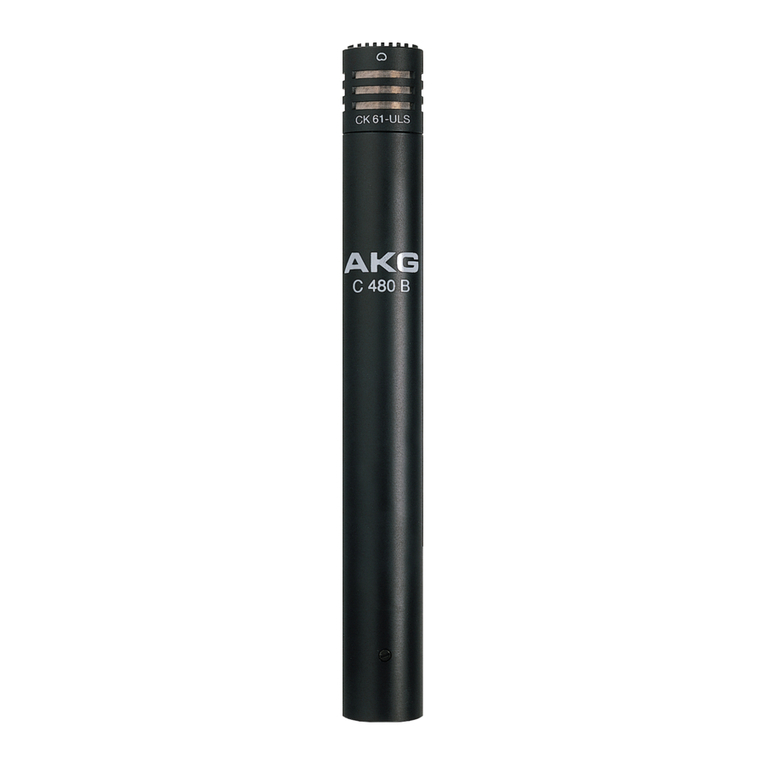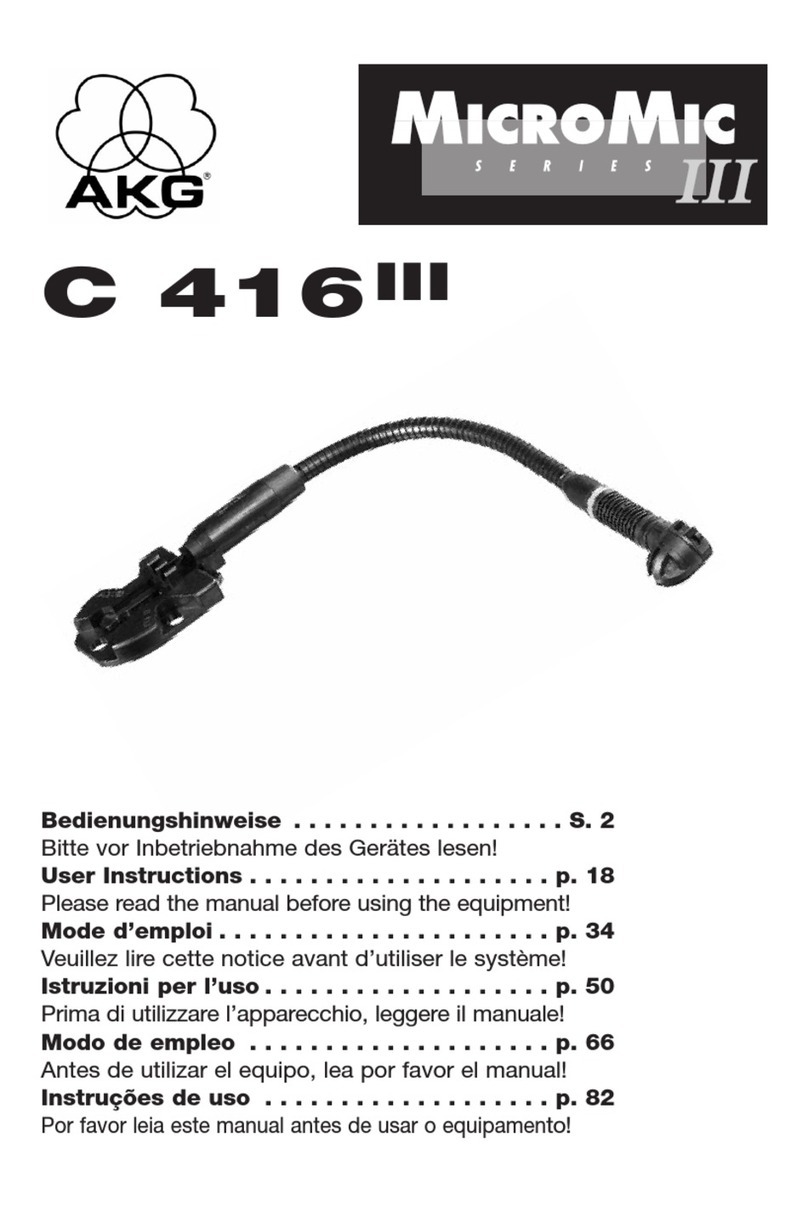der Scheibe ab. Je größer die verwendete Grenzfläche
ist, desto gleichmäßiger wird der resultierende Fre-
quenzverlauf sein und desto tiefer in den Bassbereich
wird das Mikrofon aufnehmen.
Dieses Mikrofon hat eine etwa halbkugelförmige
Richtwirkung, ist also nur vor der verwendeten Grenz-
fläche empfindlich für Schallereignisse. Dies wird auch
in vielen publizierten Arbeiten und Artikeln über diese
Art von Mikrofonen beschrieben.
Die Empfindlichkeit ist etwa 6 dB höher als die her-
kömmlicher Kugelmikrofone, wenn das Mikrofon auf
eine große und schallharte Oberfläche (Grenzfläche)
gelegt oder montiert wird. Diese Flächen können Holz-
oder Steinböden, Wände aus ähnlichem Material,
Decken oder größere Flächen von Instrumenten, z. B.
Klavierdeckel, sein. Die Empfindlichkeitserhöhung
bewirkt auch eine Verbesserung des Geräusch-
abstandes im gleichen Maße. Das verwendete Kugel-
mikrofon nach dem Druckempfänger-Prinzip hat
weiters den Vorteil, dass es wesentlich unempfind-
licher gegen Trittschall und Windgeräusche ist als
Richtmikrofone.
Die Gummifüßchen, eventuell in Verbindung mit der
beiliegenden Klebemasse, verhindern Reststörungen
von vibrierenden Böden oder Wänden.
Die am Mikrofon einschaltbare Bassabschwächung
hilft zusätzlich, Verzerrungen bei tiefsten Frequenzen
hintanzuhalten, die z.B. durch Rumpel- oder Wind-
geräusche auftreten können. Die Steilheit des Filters
beträgt ca. 12 dB/Oktave, die Eckfrequenz (-3 dB
Punkt) liegt bei 150 Hz.
Der Mikrofonausgang ist niederohmig und elektro-
nisch symmetriert. Sie können das Mikrofon sowohl
an symmetrische Eingänge mit oder ohne Phantom-
speisung als auch an unsymmetrische Eingänge
anschließen. Zum Betrieb des Mikrofons an symmetri-
schen Eingängen ohne Phantomspeisung oder
unsymmetrischen Eingängen benötigen Sie ein Phan-
tomspeisegerät von AKG, z.B. das B 18.
2 Anschluss
2.1 Allgemeines
Das C 542 BL ist ein Kondensatormikrofon und benö-
tigt daher eine Stromversorgung.
3
